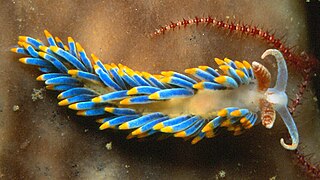
Nudibranchs are a group of soft-bodied, marine gastropod molluscs which shed their shells after their larval stage. They are noted for their often extraordinary colours and striking forms, and they have been given colourful nicknames to match, such as "clown," "marigold," "splendid," "dancer," "dragon," or "sea rabbit." Currently, about 3,000 valid species of nudibranchs are known.

Sea slug is a common name for some marine invertebrates with varying levels of resemblance to terrestrial slugs. Most creatures known as sea slugs are actually gastropods, i.e. they are sea snails that over evolutionary time have either completely lost their shells, or have seemingly lost their shells due to having a greatly reduced or internal shell. The name "sea slug" is most often applied to nudibranchs, as well as to a paraphyletic set of other marine gastropods without obvious shells.

Aeolidia papillosa, known as the common grey sea slug, is a species of nudibranch in the family Aeolidiidae.

Melibe leonina, commonly referred to as the hooded nudibranch, lion nudibranch, or lion's mane nudibranch, is a species of predatory nudibranch in the family Tethydidae.

Tochuina gigantea, common name the giant orange tochui, is a species of sea slug, a tritonid nudibranch, a marine gastropod mollusk in the family Tritoniidae.
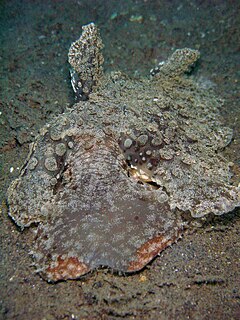
Melibe viridis is a species of sea slug, a nudibranch, a marine gastropod mollusk in the family Tethydidae.

Melibe is a genus of sea slugs, nudibranchs, marine gastropod mollusks in the family Tethydidae.
Tritonia papillosa is a species of dendronotid nudibranch. It is a marine gastropod mollusc in the family Tritoniidae.

Aeolidia is a genus of sea slugs, aeolid nudibranchs, marine gastropod mollusks in the family Aeolidiidae.

Scorpaena papillosa, common name red rock cod is a venomous species of marine fish in the family Scorpaenidae, the "scorpionfish".
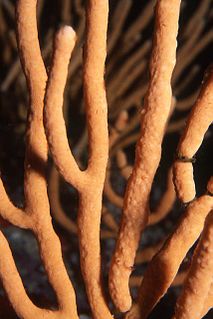
The nippled sea fan, is a species of gorgonian sea fan in the family Gorgoniidae.

Berghia stephanieae is a species of sea slug, an aeolid nudibranch. It is a marine gastropod mollusc in the family Aeolidiidae. It was previously known as Aeolidiella stephanieae.

Aeolidiella alderi is a species of sea slug, an aeolid nudibranch in the family Aeolidiidae. It is native to northwestern Europe where it occurs in the intertidal zone. It is a predator and feeds on sea anemones.
Charles Henry O'Donoghue FRSE FZS was an English zoologist who studied molluscs, a malacologist. His publications mostly deal with sea slugs and he also named a number of Bryozoans. A collection of over 700 items left to the University of Reading is known as the O'Donoghue Collection.
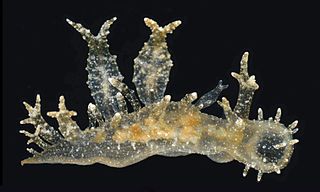
Melibe arianeae is a species of sea slug, a nudibranch, a marine gastropod mollusc in the family Tethydidae.
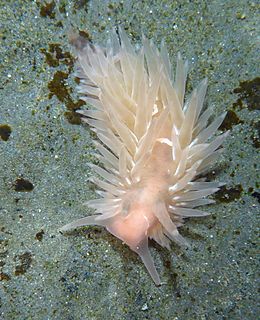
Aeolidia loui is a species of sea slugs, an aeolid nudibranch, a marine gastropod mollusc in the family Aeolidiidae. It has been regarded as the same species as the NE Atlantic Aeolidia papillosa but is now known to be a distinct species. Common names include shaggy mouse nudibranch, and shag-rug nudibranch.

Aeolidia filomenae is a species of sea slugs, an aeolid nudibranch, a marine gastropod mollusc in the family Aeolidiidae. Previously confused with Aeolidia papillosa, this species occurs on coasts of the NE Atlantic Ocean from Scotland south to Portugal.

Gorgonorhynchus repens is a species of the proboscis worm in the subclass Heteronemertea and of the family Gorgonorhynchidae. It is to be found on the seabed in shallow water in the Pacific Ocean.














